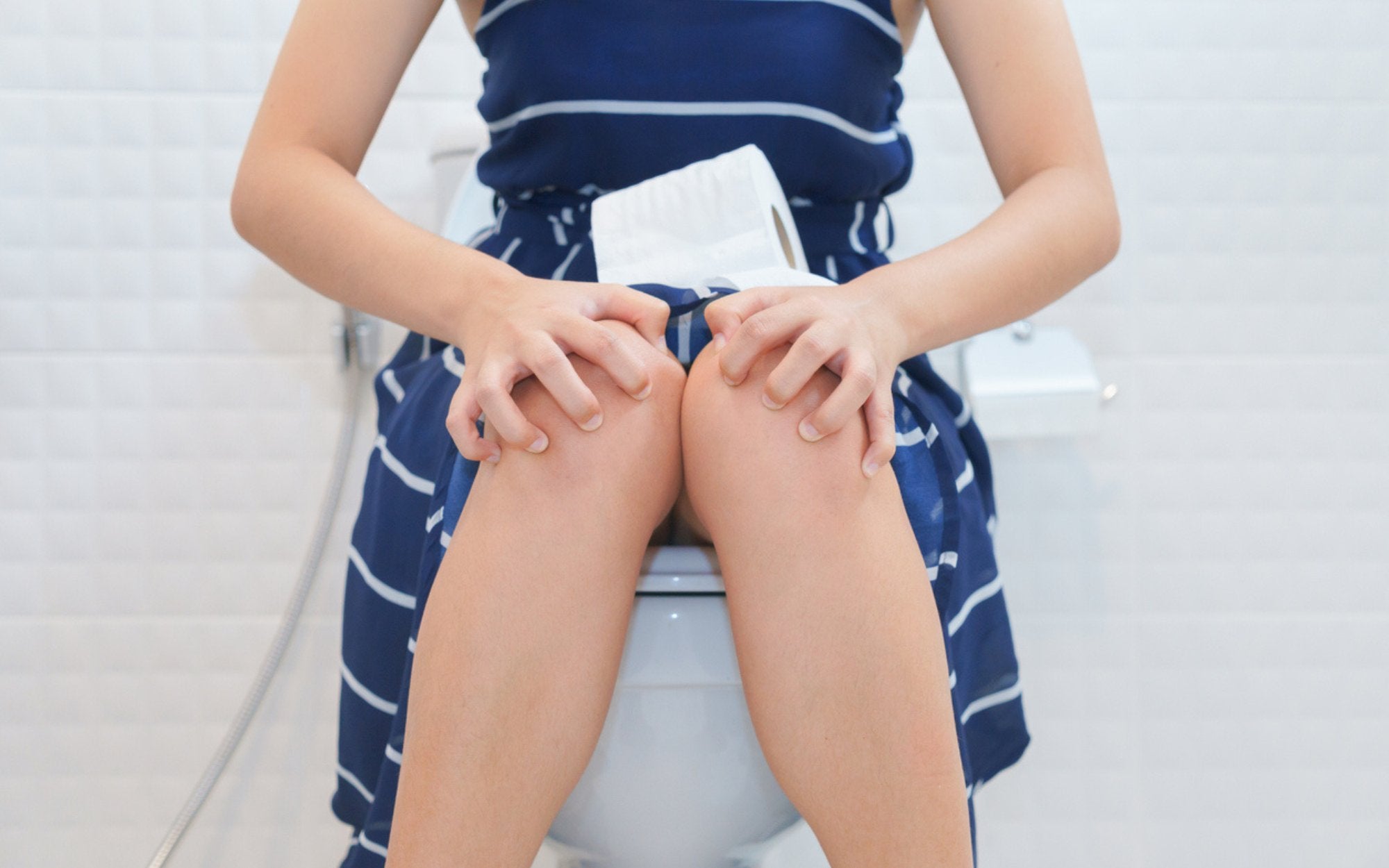How Do I Know if I Have a Yeast Infection, a UTI, or Something Else?

If you’re reading this and you own a vulva, chances are you’ve experienced some vaginal discomfort in your life. We all know the symptoms—itchiness, strange smells, even stranger discharge. So many vaginal conditions can give you similar symptoms that it’s hard to know if you have a yeast infection, a urinary tract infection (UTI), or something else.
Luckily, there are ways to differentiate each condition so you can get treated early—and get back to a fresh, infection-free vagina.
First things first: What is a yeast infection?
Also known as candidiasis, a yeast infection is a very common fungal condition. Up to 75% of people with a vagina will experience a yeast infection at some point in their life.
Yeast infections are usually caused by an overgrowth of Candida albicans. This can happen if your skin gets damaged, if you have a weak immune system, or if you’re taking antibiotics.
What are the symptoms of a yeast infection?
Spoiler: they aren’t cute. Here are the most common signs that you might have a vaginal yeast infection:
- Itchiness and irritation
- Redness and swelling
- Thick, white discharge (similar consistency to cottage cheese)
- Uncomfortable or burning sensation when you pee
- Pain during sex
- Rash or soreness on the vulva
But aren’t there other conditions that feel the same way?
There sure are. UTIs, bacterial vaginosis (BV), and certain sexually transmitted diseases (STDs) share symptoms with yeast infections. In some cases, it can be almost impossible to tell the difference without the help of a medical professional.
So, how can you tell if it’s a yeast infection?
Let’s break down some common vaginal conditions compared to yeast infections and how to tell which is which.
Yeast Infection vs. Bacterial Vaginosis
How they’re the same: Discharge, soreness, and itching.
How they’re different: BV discharge has a very specific fishy odour and a thin watery consistency. Yeast infection discharge typically has no smell and a curd-like consistency.
Yeast Infection vs. Allergic Reaction (AKA Contact Dermatitis)
How they’re the same: Soreness, burning, itching, and painful sex.
How they’re different: Allergies in or around your vagina don’t cause discharge, while yeast infections do.
Yeast Infection vs. Genital Herpes
How they’re the same: Burning and itching.
How they’re different: Like BV, genital herpes discharge is thinner and has that distinct fishy smell. Herpes can also cause small blisters or sores on the genitals, which you won’t see with a yeast infection. Plus, genital herpes can sometimes lead to flu-like symptoms, whereas yeast infection symptoms stay around the vagina.
Yeast Infection vs. Gonorrhea
How they’re the same: Discharge and pain when peeing.
How they’re different: Yeast infections are caused by fungi, while gonorrhea is caused by bacteria. Gonorrhea discharge is more yellow in colour, while yeast infection discharge is more white with a cottage cheese consistency. And if your vagina is feeling itchy, it’s most likely not gonorrhea.
Yeast Infection vs. UTI
How they’re the same: Burning or pain when peeing.
How they’re different: Pain occurs during a yeast infection because the area around the vagina is irritated, so it burns when it comes into contact with urine. With a UTI, the burning comes from inside the inflamed urethra. Yeast infections also have several symptoms you won’t see in UTIs, like discharge, itchiness, and redness.
How do you treat a yeast infection or UTI?
Step one: confirm the condition with your doctor. They can run tests to find out exactly what the problem is and prescribe the right treatment.
Yeast infections are treated with over-the-counter or prescription antifungal medications. They can come in many forms, including pills, vaginal creams, and suppositories.
UTIs are treated with prescription antibiotics. Symptoms will typically go away within 3-5 days of starting the treatment, but make sure to take the entire prescribed dosage. Stopping your antibiotics early can lead to antibiotic resistance—a life-threatening condition that makes it harder to treat future infections.
How can you prevent yeast infections and UTIs?
Since yeast infections and UTIs are both caused by bacteria, preventing one will typically help prevent both. Here are our top tips for steering clear of these vaginal conditions:
- Drinks lots of water to keep pee flowing regularly through the urinary tract.
- Wipe front to back to stop bacteria from entering the urethra or gathering around it.
- Take a daily probiotic to support the good bacteria in your vagina and urinary tract.
- Change out of sweaty or wet clothes quickly to avoid bacteria build-up.
- Pee before and after sex and use cleansing wipes to remove bacteria from toys and genitals.
- Take a boric acid vaginal suppository, like Utiva Yeast Balance, to support vaginal health by balancing vaginal flora and pH levels. Utiva Yeast balance helps target all the common fungi that cause vaginal infections, including any that are resistant to antifungal medication.
- Take a daily cranberry PACs supplement to stop bad bacteria from sticking to the urinary tract.
What are the best cranberry pills for UTIs and yeast infections?
Utiva Cranberry PACs is a powerful, natural supplement for UTI prevention. Every dose contains 36mg of proanthocyanidins (PACs)—a nutrient found naturally in cranberries that stops bacteria from sticking to your urinary tract lining.
Cranberry pills have also been linked to yeast infection prevention. PACs help prevent Candida albicans overgrowth, which is the main cause of yeast infections.
Utiva Cranberry PACs has also been recognized by the Society of Obstetricians and Gynaecologists of Canada (SOGC). That means it has been carefully reviewed by a panel of medical professionals to confirm it’s a safe and effective supplement—all based on scientific evidence.
The proof is in the results. 94% of Utiva customers require only Cranberry PACS to help prevent UTIs and other bacterial infections. Bonus: It’s trusted and recommended by over 10,000 doctors for urinary tract health.
“About 3 years ago I started getting UTIs. I went from having a UTI here and there to having Chronic UTIs. Ever since I started taking Utiva a couple of months ago, I haven’t had any infections and my bladder health feels more secure and protected.”
References:
https://www.goodrx.com/conditions/urinary-tract-infection/uti-or-yeast-infection
https://www.evvy.com/blog/8-common-conditions-often-mistaken-for-a-yeast-infection
https://www.webmd.com/women/do-i-have-a-yeast-infection
https://www.sciencedirect.com/science/article/abs/pii/S0140673607609179
https://www.ncbi.nlm.nih.gov/pmc/articles/PMC3937597/Knowledge is power
Sign up to our newsletter to keep learning!

- Choosing a selection results in a full page refresh.
- Opens in a new window.



